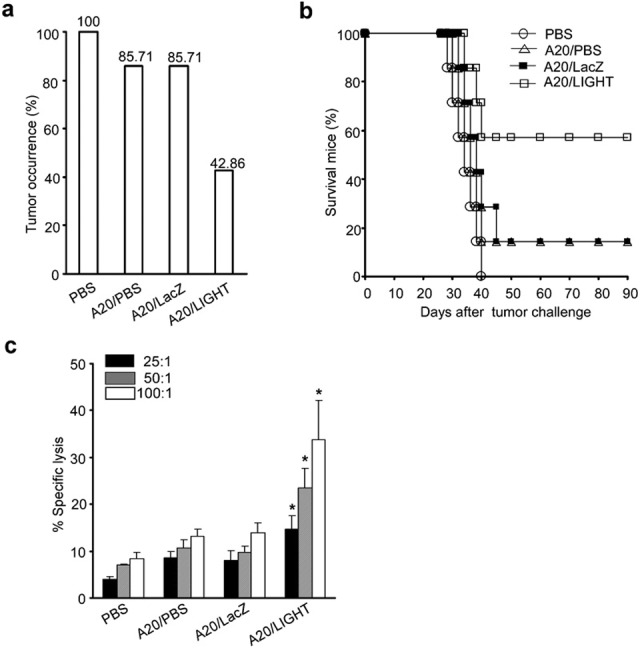Figure 3.

Immunization with the LIGHT gene-modified A20 vaccine elicits protective immunity against challenge with the parental tumor cell line. A20 cells were transfected with Ad LacZ or Ad LIGHT, followed by treatment with mitomycin-C (100 µg/ml) for 1 h, to prepare the tumor vaccine. BALB/c mice were divided into four groups and injected twice s.c. (2 weeks apart) with PBS or 1×106 A20 cells, A20/LacZ cells or A20/LIGHT cells. One week after the last vaccination, animals were challenged with live parental A20 cells (2×105 cells/mouse) in a volume of 0.2 ml s.c. on the opposite flank. (a) Tumor occurrence in mice vaccinated with PBS, A20 cells, A20/LacZ and A20/LIGHT. (b) Comparison of mean survival time among mice from different experimental groups following challenge with A20 cells. (c) Ten days after tumor challenge, three mice from each group were killed. Splenic lymphocytes from these mice were isolated and cocultured with inactivated A20 for 6 days in the presence of recombinant murine IL-2 (20 U/ml). Stimulated splenocytes were then collected for use as CTL effector cells in cultures at effector/target ratios of 25∶1, 50∶1 or 100∶1. The specific lysis against A20 cells was determined by a standard LDH release assay. Data are representative of three independent experiments. *P<0.05. Ad, adenovirus; CTL, cytotoxic T lymphocyte; LDH, lactate dehydrogenase; PBS, phosphate-buffered saline; s.c., subcutaneously.
